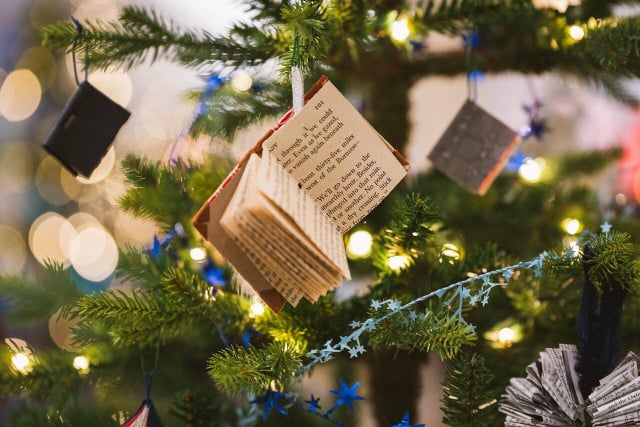In terms of real vs. fake Christmas trees, which one is greener (pun intended)? If you’re trying to figure out which of the two is the most sustainable option and whether there are any alternatives, then this article is just for you!
Real vs. Fake Christmas Trees: A Great Debate
In 2019, more than 96 million U.S. households decorated their homes with Christmas trees. 81 per cent of those trees are artificial, says the American Christmas Tree Association, though they are seeing an upward trend in sales of real trees.
If you’re wondering whether cutting down a fresh tree is really more sustainable than reusing a fake, wonder no more! Below we’ve compiled the most important arguments on why you should go with the real tree trend and what alternatives there are.
Getting a Real Christmas Tree

First, let’s take a look at the disadvantages of real Christmas trees. Though real trees are generally more sustainable than fake trees because they are recyclable and absorb carbon dioxide as they grow, there are a couple of things you need to know to make sure your real tree doesn’t turn into an environmental burden:
- Real Christmas trees are often treated as single-use disposable products. Many of them end up in landfills, where they take up a lot of space. Due to the resulting lack of oxygen in these landfills, the trees take a long time to decompose and when they do, they release a high amount of methane. According to the British Carbon Trust, the carbon footprint of these trees amounts to 16kg.
- Cut-down trees can have a significant carbon footprint due to transportation.
- Real Christmas trees are often treated with pesticides, which can be harmful to our environment and our health.
- As stated by Greenpeace Canada, it is unclear whether trees absorb more carbon than they release in their first 20 years of life. Christmas trees are generally cut in their teenage years, before reaching their full carbon-absorbing potential.
What you can do about it:
- Make sure your tree does not end up in a landfill after the holidays! The best option would be to find a tree recycling program in your area that turns them into mulch. Earth911 offers a directory to help you find one. By recycling your tree, you can reduce its carbon footprint by up to 80% (says the British Carbon Trust).
- Make sure you buy a tree that is locally sourced and grown.
- Enquire about the conditions under which your tree was grown. Farms that let you cut your own tree and smaller local growers are somewhat less likely to spray their trees with heavy pesticides.
Fake Christmas Trees: A Plastic Nightmare



If you’re thinking that an artificial tree must be more sustainable because you reuse it year after year, think again.
- Artificial trees are made from one of the nastiest plastics out there: PVC. It poses serious health risks, pollutes water, air, and soil, and is nearly impossible to recycle. Whether it ends up in the landfill or is incinerated at a waste management facility, it will release toxic pollutants and gases into the environment.
- Most artificial trees are manufactured in China and then shipped across the world before making their way into millions of homes and businesses throughout the United States. These trees have a much higher carbon footprint than real trees do and would have to be reused countless times to make up for it.
So, by all means, deck the halls–just not with a plastic tree. If you already have one at home, try to reuse it for as long as you can.
Alternatives to Real and Fake Christmas Trees



Are real or artificial Christmas trees the only options to consider? Absolutely not! Here are some other ideas for you to consider:
- Rent a tree: learn everything you need to know about getting a potted Christmas tree and whether it is a good alternative to your regular cut-down tree in our guide “Renting a Christmas Tree: Is It More Sustainable?“.
- Is there a tree outside your place that you could decorate? Looking out into the lights might bring Christmas joy to those around you and it won’t require you cutting down a tree.
- Collect individual branches of pine, spruce, or fir and decorate them. Place them in a vase and add some fresh or dried gypsophila flowers and your favorite ornaments.
- If you’re a bookworm and have lots of books at home, why not make your own tree? You can find some really nice examples of DIY Christmas trees made out of stacked books online.
- If you’re still looking to bring a live tree into your home, why not try a Norfolk Island Pine or similar tree that you can keep indoors? You can enjoy its fresh green vibes year-round and decorate it for the Christmas season. Before you decide, make sure to read up on how to care for these plants.
Read More:
- Vegan Gingerbread Cookies That are Easy & Delicious
- 3 Simple Gluhwein Recipes for Your German Mulled Wine
- Minimalist Christmas Tips: Enjoy a Sustainable and Stress-Free Holiday
Do you like this post?






